Dion Jordan: Draft Bust, Back from the Abyss

In the summer of 2015, while serving a one-year suspension from the NFL for failing drug tests, Dion Jordan disappeared. He didn’t return phone calls or respond to text messages sent by his agent, Doug Hendrickson, who kept hearing from Jordan’s concerned cousins. They told Hendrickson that Jordan was binge-drinking for weeks at a time by himself at home in Arizona.
Hendrickson eventually reached Jordan’s girlfriend, Paige Pettis. “Listen,” he told her, “we gotta get him out here.”
Out here meant San Francisco, where Jordan is from and where Hendrickson is based. As Jordan recounts his version of the story, he says he was under the impression that Pettis planned the trip so they could watch his favorite baseball team, the Giants. And while they did catch a game, that does not appear to be the true purpose of their excursion. What unfolded the next morning was closer to an intervention.
“He came into my office and was just a f------ wreck,” Hendrickson says. “I mean, I would quantify it as literally near death. He looked homeless, just awful.”
Jordan wrapped both arms tightly around his agent’s shoulders and cried for 20 minutes. He needed a haircut, and he wore a ratty T-shirt and a long, stained black coat. No one spoke, as Jordan sobbed and sobbed. “I just knew that I had to do something to get myself back where I wanted to go,” Jordan says now, more than two years later. “Ya feel me?”
Hendrickson didn’t know what to do, so he did the only thing that came to mind. He walked Jordan across the street in downtown San Francisco, then pushed open the doors at Empower, the gym run by Tareq Azim, a trainer who’s more like a life coach. “Dion needs you,” Hendrickson said.
Azim did a double take. He couldn’t believe that was Dion Jordan, the Oregon star who was drafted by the Dolphins third overall in 2013. Azim recalled Jordan as a “freak” and a “badass.” He says, “I was blown away. I could have knocked him over. He looked that frail and just not healthy.”
They started with an honest, uncomfortable conversation. No small talk. This, Azim told Jordan, is life and death. Jordan opened up about his alcohol and drug use, how he’d drink often and all night and sometimes he’d take MDMA. Jordan was dizzy and yet comfortable. For the first time in a long time, he felt safe. But he also wondered: “What the f--- have I gotten myself into?”
They made a list of mental and emotional deficiencies, all the stuff that Jordan held onto, that tormented him. Then they put a plan together, right then, Day 1. “It wasn’t even how he ended up there,” Azim says. “It was simple.
“What are you hiding from?”
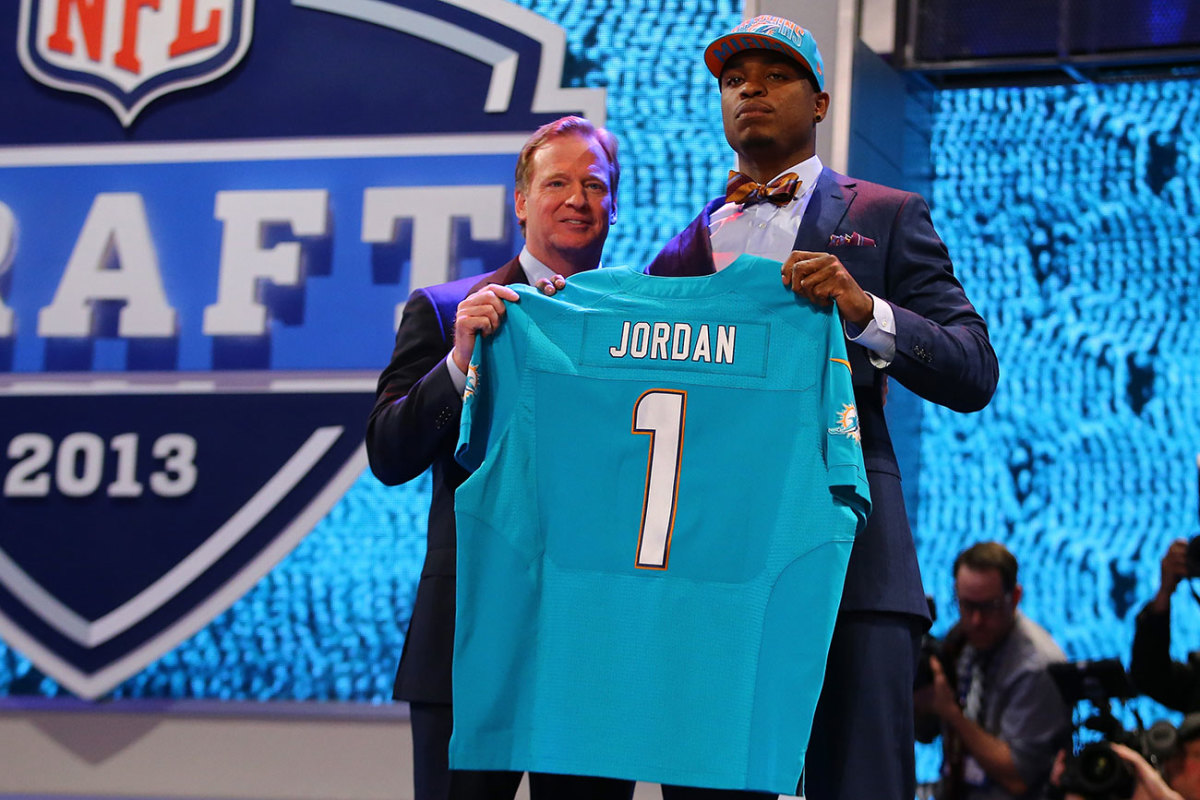
In the long, sad, anguished history of draft busts, there’s a checklist of common problems. Jordan struggled with most of them, from drinking and drug use to injury and ambivalence. Hence his plummet from promising young talent to football pariah in two seasons.
Jordan cops to all of it. He didn’t take his career seriously enough. He ignored anyone who warned him. He prioritized bad habits. He hung around the wrong friends. And he was distracted by South Beach and all that Miami glamour. As a rookie in 2013 Jordan had just 19 tackles and two sacks, playing in all 16 games as a Dolphins reserve. “My production was directly related to what I was doing off the field,” he says. “I put nothing into it. I was just showing up.”
He was 23 then, rich—his four-year contract was worth roughly $20 million—almost famous and living in Miami. He deserved to have fun, he reasoned, and he could handle it. He dabbled in molly and ecstasy and smoked marijuana. Mostly he liked to drink. He preferred hard alcohol and consumed all kinds. He told himself he’d party only on some weekends. That became every weekend, and that became every weekend and some weeknights. Eventually, he says, he could drink all night without blacking out. “It becomes exhausting,” Jordan says. “Because every day you’re trying to chase that feeling you had yesterday.”
The Dolphins had traded picks Nos. 12 and 42 to move up and draft Jordan, based almost entirely on his potential. He had managed only 14.5 sacks in four seasons at Oregon, where the Ducks rotated defensive linemen in shifts like hockey lines. Still, Jordan stood 6' 6" and weighed 248 pounds and ran a 4.6-second 40-yard dash, and that combination of size and speed is what made him so enticing. He ran faster than some NFL receivers.
That is, when he was on the field. The NFL suspended Jordan for four games to start the 2014 season after he tested positive for a stimulant on the league’s banned substance list, and he had two games added to that suspension for a failed drug test.
He never stopped partying during that first suspension. At that point he had not yet tried to quit. He says the Dolphins went out of their way to offer him help, and from the very top. His biggest supporter was Stephen Ross, the team’s owner and billionaire real estate developer, who checked in with Jordan regularly via phone calls and offered to take care of whatever treatment Jordan might need. “He did all he could to keep me a Miami Dolphin,” Jordan says. “They don’t let too many people make as many mistakes as I did.”
After more failed drug tests, Jordan was suspended for all of 2015. He lost $5.6 million in salary and bonus money, and he didn’t really care. His life was a mess, and the circumstances only made it worse. Per NFL rules he was banned from the team facility. He had no mentors, a serious drinking problem, money to spend and endless free time. “When things aren’t going his way, he doesn’t seek more attention by trying to cause chaos,” Azim says. “He hides. He locks himself in a room.”
Jordan had never been in that kind of trouble before. When he saw his name scrolling across the sports news ticker, he knew. He had “f----- up big time.”
“It was like my whole world crumbled,” he says. “I didn’t have anything but football, and then I didn’t have that.”
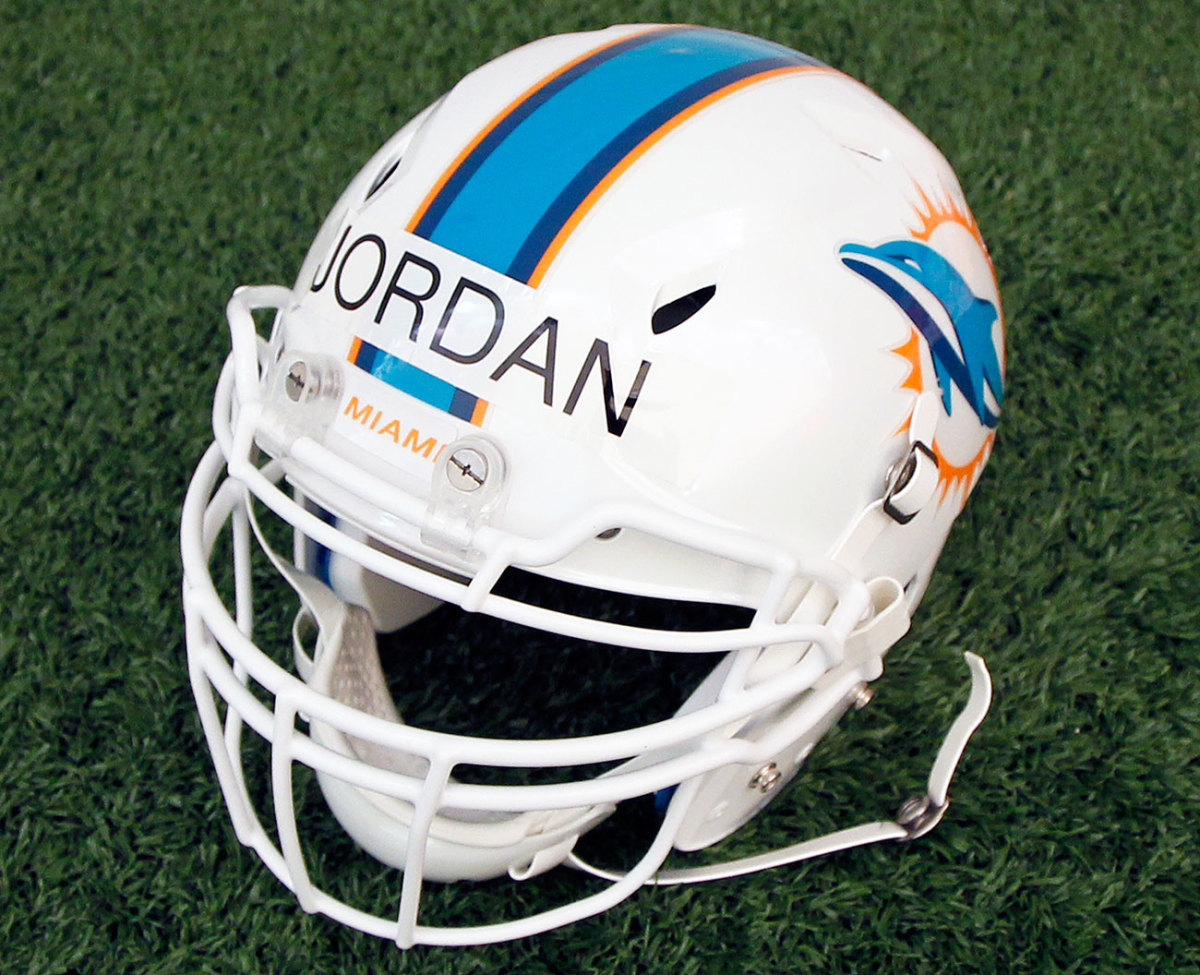
Back in San Francisco, Azim told Jordan his own story, emphasizing how the events of his life had led here, to this gym, his methods and athletes like Jordan who needed help. Azim’s family was from Afghanistan, where his grandfather was in the air force, stationed at Bagram Airfield in the late ’70s, before, Azim says, he was murdered by the communist regime. Given the danger, Azim’s family moved to Germany, where he was born a refugee. When they moved again, to America two years later, he started in sports as soon as he could run, learning taekwondo, boxing, soccer and football. He played linebacker at Fresno State.
After college, Azim returned to Afghanistan in 2004 to support his father, who he says had been in and out of mental hospitals as he dealt with severe depression. Azim planned to visit for a month and ended up staying for more than four years, working with youth soccer players and launching the Afghan Women’s Boxing Federation. He says two of his boxers were the daughters of a “notorious Taliban warlord.” But the federation was a success.
Azim returned to the U.S. in 2008, became an MMA coach (for welterweight champion Jake Shields, among others) and started to train pro football players. Raiders quarterbacks Bruce Gradkowski and Charlie Frye became his first clients in 2009, and that led to a friendship with their coach, Tom Cable, who went to Seattle in 2011 and called Azim one day. “We’ve got this guy, if we can get him to unleash his potential, he’ll probably be one of the best things to happen to the NFL,” Cable said.
“Who is it?” Azim asked.
“His name is Marshawn,” Cable responded.
Marshawn Lynch. So Azim opened Empower, where he trained Lynch and other NFL Pro Bowlers and MMA stars and celebrities and CEOs of tech startups. “I saw them struggling with the same disease I saw in Afghanistan,” he says. “That disease is fear. Fear paralyzes people.”
Says Jordan: “Fear paralyzed me.”
After the initial meeting with Azim, Jordan quit drinking. Or tried to. For the first few days, his hands shook and he felt sick. Azim kept him him busy, filling Jordan’s days with workouts, AA meetings and therapy sessions. He gave Jordan a book to read, Purification of the Heart, which explores Islamic spirituality. He assigned Jordan to complete one good deed a day. Jordan engaged in conversations with strangers he might previously have ignored and even once gave his sweatpants—the ones he was wearing—to a homeless person.
Azim expected what he calls “hiccups,” and the first one happened on Day 4 in that summer of ’15 when Jordan went AWOL. Azim didn’t hear from him for two days, and Jordan told him he had been drinking by himself. He apologized. “This is just really hard for me,” he said.
“Bro, you’re safe here,” Azim responded. “There’s no judgment. I got your back.”
Jordan moved from Arizona into the guest house of a family Hendrickson knew in San Francisco. He filled the idle hours by ordering Uber Eats and playing NBA2K, creating his own franchise and guiding it through season after season.
The trainer designed workouts to humble Jordan, to show him “you’re not as tough as you think you are,” Azim says. They focused on body-weight exercises. At first Jordan could do only a handful of push-ups on his fingertips. By the end the summer he could pump out more than 100.
Jordan attended AA meetings every day, sometimes twice, choosing not to speak at first but listening to the stories others told. He came to the same realization as many addicts: He wasn’t alone. He went longer between “hiccups,” and sometimes when he’d start drinking, like with friends or when visiting family, he’d call Azim and admit the truth, right then.
After six months of regular but uneven progress, Azim was in New York on business when a friend in the Hamptons suggested they stop by Stephen Ross’s estate. Azim did not know Ross, but they took a quiet stroll by the water as Azim filled the Dolphins owner in on Jordan’s progress. “Getting Dion healthy is my No. 1 priority,” Ross said.
When Azim returned to San Francisco, he told Jordan, “Listen, man, they’re going to take you back.” Jordan smiled. That’s all he wanted.
More important progress was already underway. In therapy, Jordan learned his carousing wasn’t really harmless partying but rather the way he masked deeper issues from his childhood he had never dealt with. “Fear,” Azim says.
Jordan grew up for part of his childhood in the Hunters Point neighborhood in San Francisco. He says his mother was a drug addict, and he saw her get physically abused. He says his dad was around much.
At age 12, Jordan and his two younger siblings were taken from their mother and sent to live with an aunt in Chandler, Ariz. That was the first time he realized his home life didn’t have to be so chaotic, and his mom got clean and moved there, too.
Jordan calls her “my dog” and “my angel.” But while he acknowledges she struggled with a disease, her actions in his childhood had a deep, lasting impact on him. “Her choosing [drugs] over her kids is probably the worst thing,” he says. “It hurt me more than anything. Even to this day, that was the first and only person who’s broken my heart to that extent.”
He pauses, looks away. “I love her so much,” he says.
Jordan buried all that pain. Just like he buried the memories of the time he almost burned to death in 2007, while trying to siphon gas from a car with a vacuum cleaner, which caught on fire. He says he’d often transfer gas from one family car to another this way. He spent a month in the burn unit at a local hospital, underwent skin grafts and tried to pretend that despite the physical scars—burns covered 40 percent of his body—the accident didn’t affect him. Doctors told him he’d never walk again, let alone play football.
Except he made it to the NFL, only to bury more pain, mostly by suppressing all his anger over the family members who saw dollar signs when he became a star. Jordan wanted to help—he did help—but he felt used.
While suspended, Jordan believed he had failed all those people who depended on him. Like the mom who kicked drugs only to watch her son succumb to alcohol. That hurt, so he drank. Reports surfaced that the Dolphins wanted to trade him. That stung, so he drank. He obtained reinstatement from the NFL in July 2016 and felt not peace but pressure. His solution: drink. “I decided to feel sorry for myself,” he says.
The more he went to therapy, the more he realized he had only one person to blame for all his problems: Dion Jordan. He’s asked how much responsibility he should take, given the events of his childhood, the expectations in the NFL, the family obligations. “All of it,” Jordan says. “At every turn, I had options. I could have spoken up and told someone I was hurting. I just pushed it down and kept moving.”
Azim and his therapist taught Jordan that trust is not weakness but strength. “That’s the true definition of manhood,” Azim says. “In the NFL, there’s this massive level of hypocrisy in the development of players. All these coaches and mentors who tell these players not to be vulnerable, not to show weakness.
“Someone like Dion just retreats.”
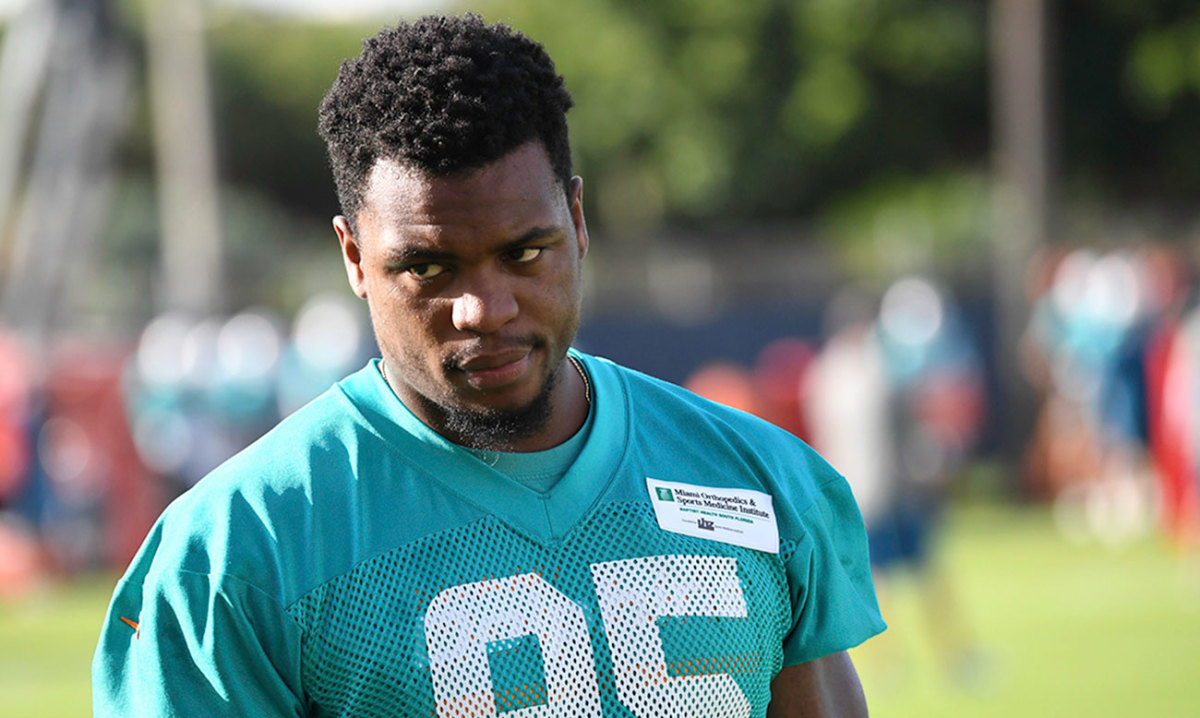
After his reinstatement, Jordan returned to Miami for the 2016 season. Except that he had injured his left knee during those workouts in San Francisco. The Dolphins put him on the Reserve/Non-Football Injury list, shelving him for at least the first part of the season while he recovered. Here he was, 3,000 miles from Azim and his support system, alone and again not playing football. He figured he could have one drink when he went out. That became two drinks and then four. This “hiccup” was not one incident but a series of them. “It was getting worse and worse,” Azim says. “Like, oh, s---, this is getting dangerous.”
Out of options, a panicked Azim called an old friend: Cable, now the assistant head coach of the Seahawks. Azim knew that Cable’s son, Alex, had struggled with drug and alcohol addictions, gone to rehab at a wilderness retreat, changed his life and admirably decided to counsel other addicts. “This is driving me crazy,” Azim told Cable. “I’ve put in all this work and now he’s going to the dark side again. I’m legitimately heartbroken. Because I’m like, how has he given up after everything we’ve accomplished?”
“Don’t give up on him,” Cable responded.
The Dolphins allowed Jordan to return to San Francisco in December. He went back to Azim. They mapped out a daily schedule:
All day—focus on yourself and winning
9:20: pray for gratitude and forgiveness
10: Empower training camp
11:30: NFL Counselor Check-In
Noon: AA meeting
Azim and Cable discussed possible next steps, and Cable suggested his son move to San Francisco to live with Jordan and help him sustain his sobriety. So Alex moved into Jordan’s one-bedroom apartment, sleeping on a pullout couch, accompanying Jordan to meetings and eating takeout with him every night. “It felt like Alex genuinely cared about me,” Jordan says.
“He didn’t ask me for anything.”
The Dolphins released Jordan in late March. He understood. Local writers tabbed him the biggest draft bust in team history. Still, more than a dozen teams reached out to Hendrickson to inquire about his status. Jordan wanted to stay on the west coast, if possible, to remain closer to his family in San Francisco and the trainer who changed his life.
Tom Cable’s presence in Seattle helped Jordan decide to sign with the Seahawks. Well, that and an unlikely voice of support. Azim happened to see Lynch, his longtime client, for a training session in the Bay Area. He handed over the list of teams that wanted to sign Jordan. Lynch glanced at the list quickly, then said, “Seattle is the best place for Dion,” citing Cable and the team’s support system.
Jordan says he hasn’t had a drop of alcohol since February, right around the Super Bowl. “I just have to wake up every morning and make the right decisions,” he says. “That’s on me.”
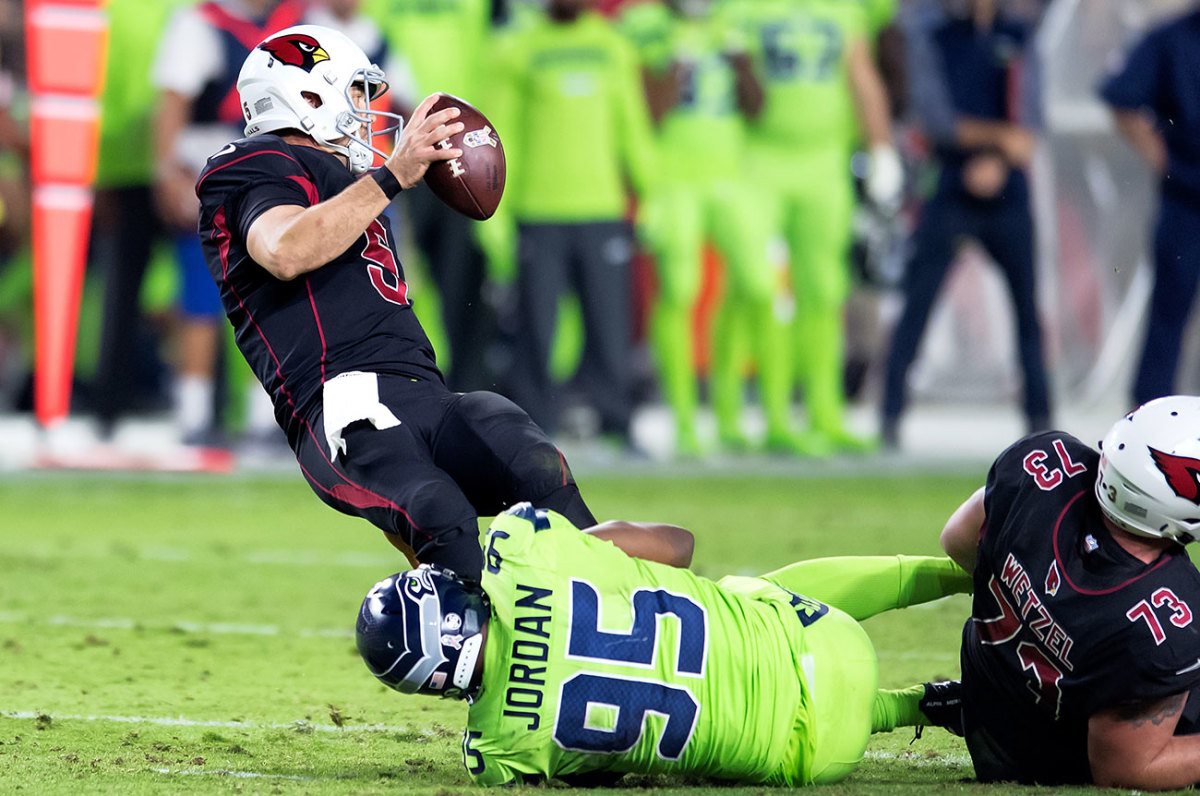
On Nov. 9, after two knee surgeries and months in physical rehabilitation, Jordan played in his first NFL game in more than 1,000 days. It took place a short drive from his aunt’s house, where he lived after he was taken from his mother. Both women were in the stands at University of Phoenix Stadium in Arizona, along with Jordan’s siblings and a cadre of childhood friends.
Jordan put together his best career performance, registering 33 snaps, five quarterback pressures, two quarterback hits, two hurries and a sack. Coach Pete Carroll described Jordan as “a little raw at times.” But he also acknowledged the obvious: Not many humans could play like that after a 1,000-plus-day layoff.
Later that month Jordan and Pettis hosted their families for Thanksgiving. Jordan looked into the faces of all the people who had stood by him, who saw his struggles, whose warnings he had ignored as he nearly ruined his career and health. He thanked them. He also thanked Azim.
“Tareq saved his life,” Hendrickson says.
Now Jordan hopes to serve as something of a model for the NFL. He wants to show the league what players on one-year suspensions really need—full-time support, with the teams they play for, not some brief NFL symposium before their issues are compounded by the confluence of money, fame, free time and bad decisions. He remembers sitting in the first row of his rookie symposium, listening to Adam Jones try to scare the NFL neophytes straight with tales of players gone bad. That will never be me, he thought.
There’s a reason, Jordan says, that only a handful of players—himself, Josh Gordon, Johnny Jolly, a few others—have returned to the NFL after one-year suspensions. Banning players from facilities sets them up to fail, Jordan says. “As far as the NFL, the league is abandoning its players,” he says. “They’re saying the Shield is more important. To protect it, they’re taking away support.”
Jordan injured his neck in his second game back, against the Falcons, while recording two tackles. He was inactive for Seattle’s next three contests, and it seemed fair to wonder how he’d cope with again not playing, how he’d handle another round of disappointment. This time, it turns out, the answer was quite well. He had sacks against the Rams and Cowboys, upping his season total to three—doubling his career total—in only four games. He added seven tackles against the Rams, setting himself up for a free-agent payday this spring.
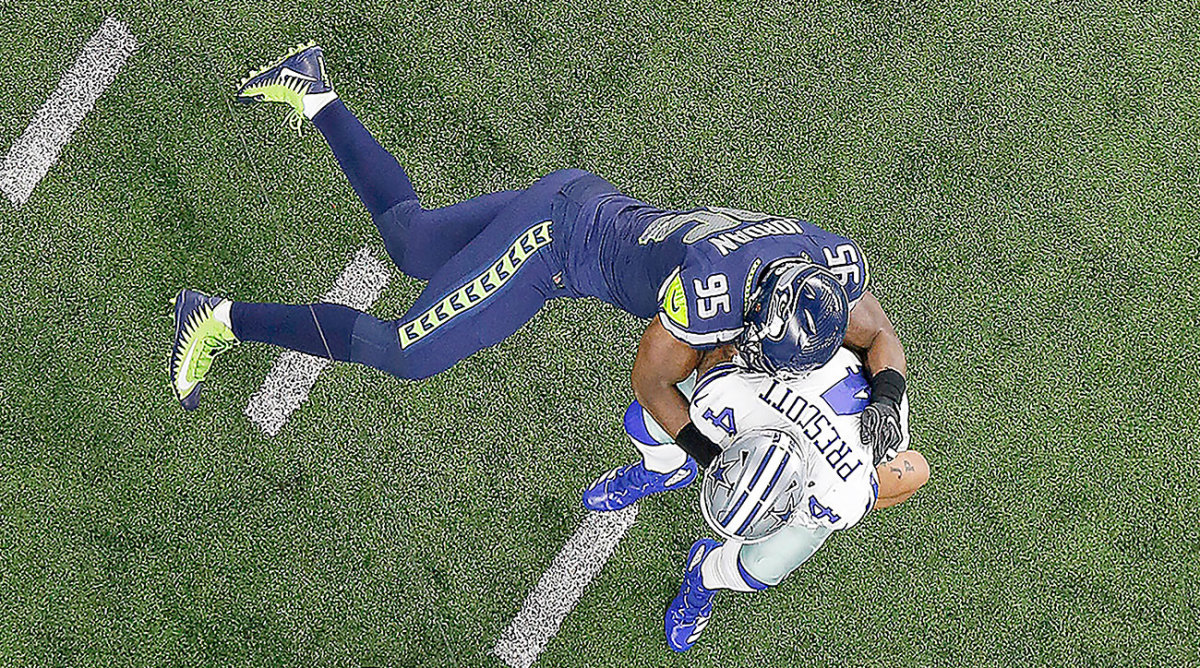
As his comeback continues to unfurl, Jordan says all the right things. He says he had to expect some bruises after a two-year layoff, as his body acclimated to full-time contact again. He says he didn’t feel sorry for himself when he got injured after the Falcons game. He says he continued his routine, the meetings, the counseling sessions, all of it. Only Jordan knows for sure.
He knows something else, too. “I’ll play one way,” he says. “Fearless.”
Question or comment? Email us at talkback@themmqb.com.
